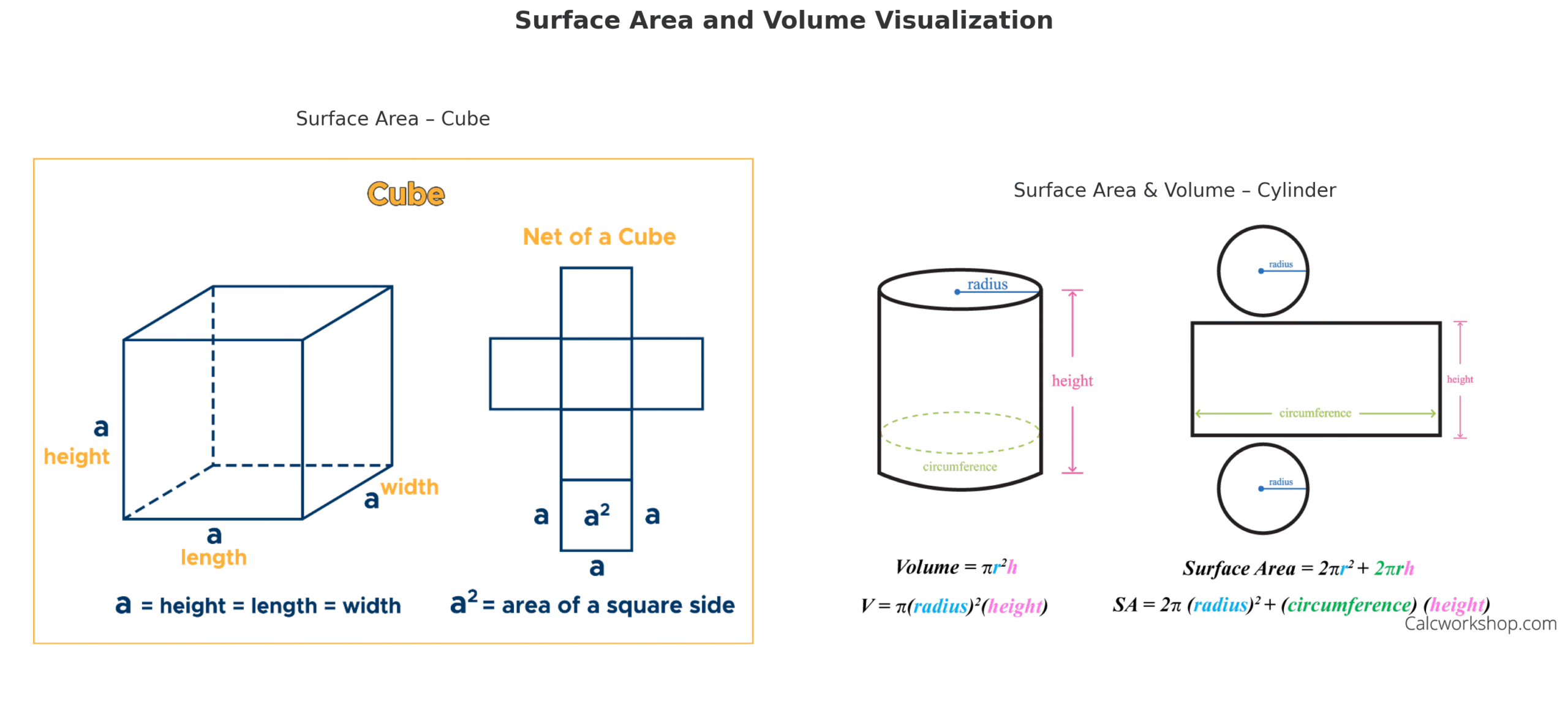Shopping cart
Hello There!
Welcome to GattPrep, your Guide for Life and Learning
Every day, you interact with solid shapes — a box of cereal (cuboid), a football (sphere), or a can of milk (cylinder). These shapes are called solids or 3D shapes because they have length, width, and height.
In this lesson, we’ll explore the common types of solids, their properties, and how to calculate surface area and volume where needed.
Let’s build your geometric thinking from solid ground!
Solids are 3-dimensional (3D) shapes. Unlike flat 2D shapes (like squares or circles), solids have:

| Solid | Faces | Edges | Vertices | Example |
|---|---|---|---|---|
| Cube | 6 | 12 | 8 | Rubik’s Cube |
| Cuboid | 6 | 12 | 8 | Matchbox |
| Cylinder | 3 (2 flat + 1 curved) | 2 | 0 | Can of Milo |
| Sphere | 1 (curved) | 0 | 0 | Football |
| Cone | 2 (1 flat + 1 curved) | 1 | 1 | Party hat |
Note: While a cube and cuboid look similar, all sides of a cube are equal, but in a cuboid, the sides can be different.

Surface area is the total area covering the surface of the solid.
Volume is the amount of space a solid occupies.
| Solid | Surface Area Formula | Volume Formula |
|---|---|---|
| Cube | ||
| Cuboid | ||
| Cylinder |

Example 1: A cube has a side length of 4 cm. Find its surface area and volume.
Surface Area = =
Volume =
Example 2: A cylinder has radius 3 cm and height 5 cm. Find its volume.
Volume =
Example 3: A cuboid has dimensions 6 cm by 4 cm by 3 cm. Find its surface area.
Surface Area =
Think about your home or classroom. How many different solid shapes can you find? Can you estimate their volumes or surface areas?